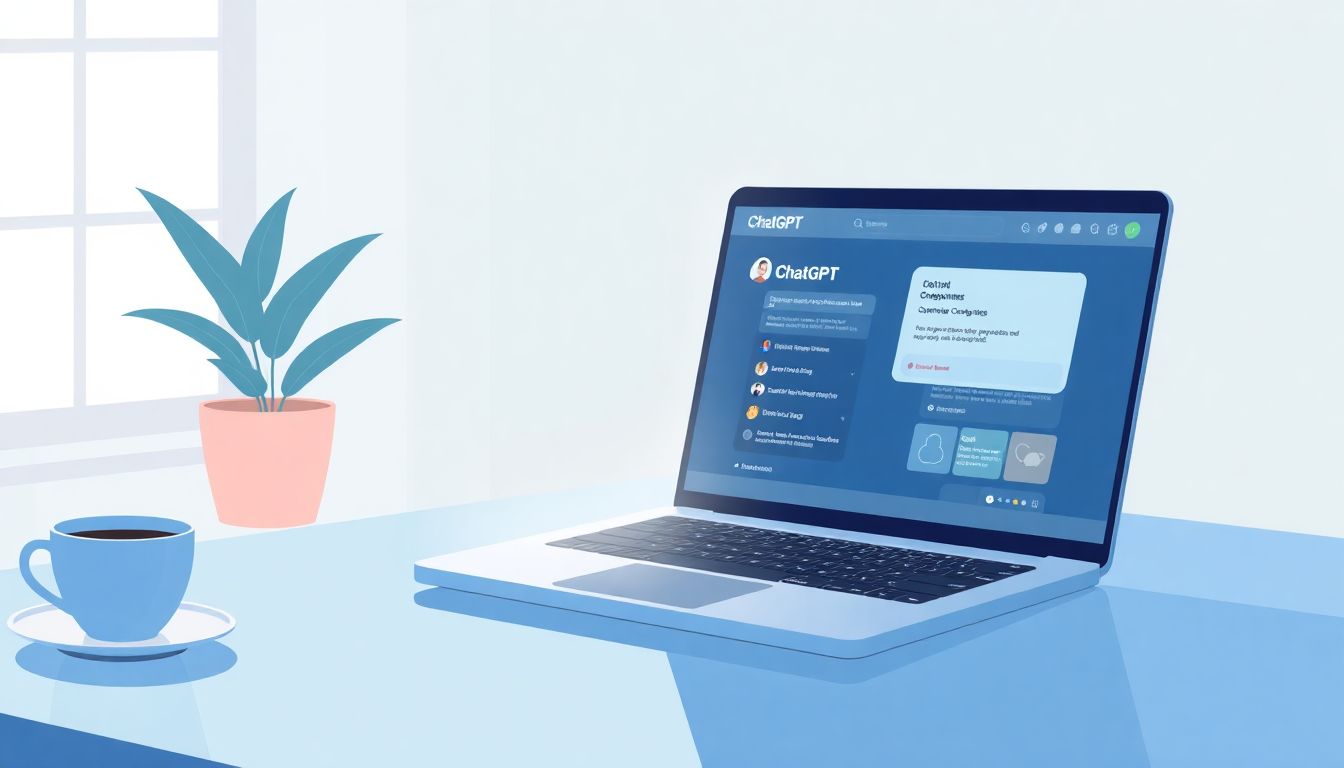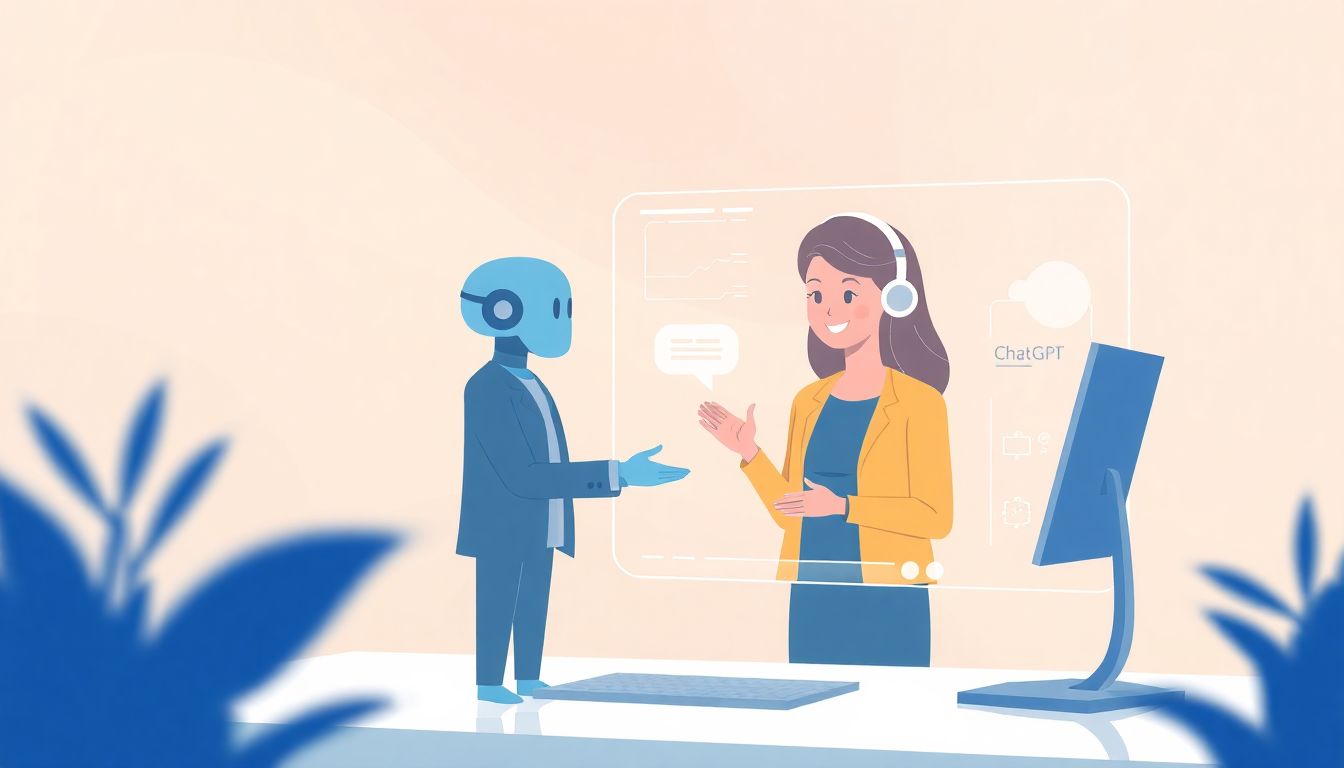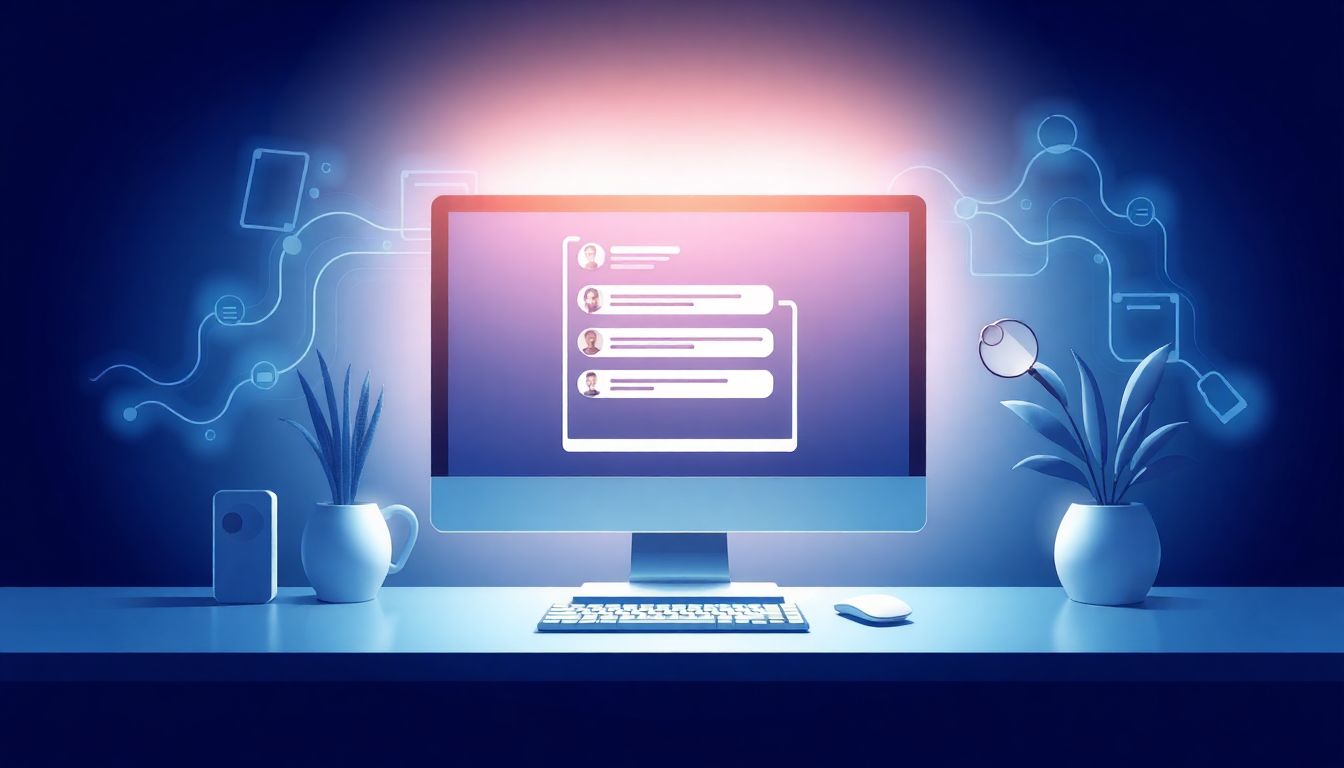Integrating ChatGPT into customer service platforms can feel like a daunting task, right? You might wonder how to make it work seamlessly with your existing systems and whether it’s really worth the hustle. You’re definitely not alone in feeling this way!
But fear not! If you stick with me, I promise you’ll discover practical steps to integrate ChatGPT like a pro, along with best practices that can ease your worries and elevate your customer support game.
We’ll cover everything from the benefits of ChatGPT to navigating common challenges, and even explore real-world success stories. Excited? Let’s dive in!
Key Takeaways
- Identify your current customer service platform (like Zendesk or Salesforce) and check for API compatibility with ChatGPT.
- Set clear goals for integration, such as improving response times or customer satisfaction, then test in a sandbox environment.
- Train your team on ChatGPT’s capabilities and regularly update its knowledge base for accurate responses.
- Monitor performance and user feedback to refine the AI’s interactions continuously.
- Be transparent with customers about AI interaction and allow human intervention for complex queries.
- Consider data privacy and technical challenges; provide training to ease employee adoption.
- Real-world examples show significant reductions in support calls and faster service with ChatGPT.
- Keep an eye on future trends, like multilingual support and data analytics, as AI technology evolves.

How to Integrate ChatGPT into Customer Service Platforms
Integrating ChatGPT into your customer service platform can elevate the support experience for both your team and your customers.
The first step is to identify which customer service platforms you currently use, such as Zendesk, Salesforce, or a custom-built solution.
Once you’ve pinpointed your platforms, check if they offer an API that ChatGPT can connect to.
Next, visit OpenAI’s documentation to understand the API requirements and how to authenticate your requests.
After that, set up a system where ChatGPT can handle incoming inquiries; this often involves creating intents and custom parameters based on the customer queries.
Then, consider training the chatbot with specific FAQs and previous customer interactions to ensure it responds accurately.
Finally, run tests to refine its responses and ensure it seamlessly integrates into your workflow.
Remember to monitor its performance closely after launch to make adjustments for continuous improvement.
Benefits of Using ChatGPT in Customer Service
Using ChatGPT in customer service comes with multiple advantages.
First, it improves response time significantly, ensuring that customers don’t have to wait endlessly for support.
Second, ChatGPT can handle multiple inquiries simultaneously, reducing the workload on your human agents.
This boost in efficiency often translates into increased customer satisfaction as questions are answered faster.
Moreover, ChatGPT operates 24/7, providing support outside regular business hours.
Its ability to learn and adapt means it can improve its responses over time, providing more accurate information as it receives feedback.
Finally, integrating this AI can reduce operational costs by minimizing the need for large customer service teams.
Steps to Implement ChatGPT in Your Customer Service
Start by conducting an internal assessment of your customer service processes to identify where ChatGPT can fit in.
Next, define clear goals for what you want to achieve with the integration, like reducing response time or improving customer satisfaction rates.
Then, set up a sandbox environment for testing to avoid disruptions in your live service.
Once testing is complete, train your staff on how to utilize ChatGPT effectively, ensuring they understand its capabilities and limitations.
Create a knowledge base by compiling FAQs and product manuals that ChatGPT can utilize to provide accurate answers.
After deploying the bot, make sure to gather user feedback to find out where improvements can be made.
Regularly review its performance against your initial goals and be ready to adapt as your needs evolve.
Best Practices for ChatGPT in Customer Support
Using ChatGPT effectively in customer support requires a few best practices.
First, always keep your tone friendly and conversational so that users feel comfortable interacting with the AI.
Implement feedback loops; regularly collect and analyze user feedback to refine responses.
Make sure to update the knowledge base frequently, especially after new product releases or policy changes.
Use analytics to track how users are interacting with ChatGPT, which will help you identify areas for improvement.
Encourage your human agents to intervene in conversations when ChatGPT encounters complex queries, ensuring a seamless experience for the user.
Lastly, be transparent with customers about when they are interacting with an AI and give them an option to speak with a human if needed.

Common Challenges When Integrating ChatGPT
Integrating ChatGPT into customer service is not without its hurdles.
One common challenge is ensuring data privacy and compliance with regulations like GDPR.
It’s critical to clarify how data will be used and stored, safeguarding customer information.
Another issue can be technical difficulties in setting up the API, leading to integration delays.
Performing thorough testing can minimize issues, but it often requires technical expertise.
User adoption can also be a challenge; employees may be resistant to changes in their workflow.
To tackle this, provide extensive training and demonstrate the benefits of ChatGPT in easing their tasks.
Sometimes ChatGPT may struggle with complex queries that require human empathy or nuanced understanding.
Establish a process for transferring such conversations to human agents smoothly.
Lastly, maintaining updated information in the knowledge base can be time-consuming but is necessary for accurate responses.
Make it a routine to review and refresh the knowledge base to keep it relevant.
Real-World Examples of ChatGPT in Customer Service
Seeing ChatGPT in action can provide a clearer insight into its potential.
For example, a retail company integrated ChatGPT to handle customer inquiries about order statuses.
This led to a 35% reduction in customer service calls while significantly speeding up response times.
Another case is a telecom provider that used ChatGPT for troubleshooting basic service issues.
The company reported a 60% decrease in support ticket volume as customers resolved their inquiries through the AI.
Also, an eCommerce platform employed ChatGPT for personalized shopping recommendations.
This not only enhanced customer satisfaction but increased average order values due to tailored suggestions.
These examples illustrate how businesses leverage ChatGPT to streamline operations and enhance customer interactions.
Incorporating these technologies could be the game changer your customer service needs.
Future of ChatGPT in Customer Service
The future looks bright for ChatGPT in customer service, with several trends emerging.
As AI technology advances, expect ChatGPT to become even more context-aware and capable of handling complex conversations.
Integration with other technologies, like augmented reality, may transform customer service experiences.
Imagine chatting with a virtual assistant that can also guide you through product features via AR!
Furthermore, there’s a growing demand for multilingual support; ChatGPT is evolving to tackle this challenge.
This can open global markets for businesses, making customer support more inclusive.
Moreover, with ongoing refinements, businesses can anticipate enhanced data analytics capabilities.
These analytics will help companies better understand customer needs and improve service efficiency.
Finally, as organizations prioritize customer experiences, the role of AI will only intensify.
Innovative features and functionalities are on the horizon, ensuring ChatGPT remains a valuable asset in the service landscape.
Resources for Further Learning on ChatGPT Integration
If you’re keen to dive deeper into ChatGPT integration, numerous resources can help.
OpenAI provides comprehensive documentation detailing API setup and best practices.
Online platforms like Coursera and Udemy often feature courses focused on AI in customer service.
Various tech blogs regularly publish updated articles and case studies on implementing AI solutions.
Forums like Reddit and Stack Overflow can also be valuable for community-driven insights and troubleshooting advice.
Consider subscribing to industry reports from organizations like Gartner to stay informed on AI trends.
Additionally, webinars and workshops hosted by AI professionals can provide practical knowledge and networking opportunities.
Utilizing these resources will equip you with the tools necessary to navigate the evolving landscape of ChatGPT in customer service.

Common Challenges When Integrating ChatGPT
Integrating ChatGPT into customer service can present some challenges that you should prepare for.
One major hurdle is ensuring compliance with data privacy regulations, such as GDPR.
You must clearly define how customer data will be handled to maintain trust and security.
Technical difficulties during the API setup can also lead to frustrating delays in integration.
Thorough testing is essential, but it often requires advanced technical skills to resolve issues.
User adoption is another challenge, as employees may be hesitant to adjust their workflows.
To overcome this, investing in comprehensive training and showcasing the AI’s benefits can help ease transition anxieties.
Sometimes, ChatGPT might stumble on complex queries that require nuanced understanding.
Establishing a smooth handoff process to human agents for such situations is key to ensuring customer satisfaction.
Finally, maintaining an updated knowledge base can be time-consuming but is crucial for accuracy.
Regularly reviewing and refreshing the information will keep responses relevant.
Real-World Examples of ChatGPT in Customer Service
Understanding how others utilize ChatGPT can give you great insights.
A well-known online retailer integrated ChatGPT to assist with tracking orders, resulting in a significant 35% drop in customer service calls.
This not only boosted response times but also enhanced the overall customer experience.
Another successful case involves a technology company using ChatGPT for basic troubleshooting.
This action led to a 60% reduction in incoming support tickets, freeing up human agents for more complex issues.
An eCommerce site also implemented ChatGPT for personalized shopping assistance.
As a result, they noticed increased customer satisfaction and higher order values due to tailored recommendations.
These examples illustrate how effectively deploying ChatGPT can streamline operations while enriching customer interactions.
Future of ChatGPT in Customer Service
The future of ChatGPT in customer service is promising, with several exciting trends anticipated.
As AI technology advances, we can expect ChatGPT to become increasingly adept at understanding context and managing complex interactions.
Integrating this technology with augmented reality could transform the customer support experience into a more immersive journey.
Furthermore, there’s a growing need for multilingual support; ChatGPT is evolving to handle multiple languages effectively.
This capability will empower businesses to engage with customers from diverse backgrounds, opening doors to new markets.
Additionally, expect improvements in data analytics, allowing companies to gain deeper insights into customer behavior patterns.
These insights will help tailor services to meet specific needs, thus enhancing service efficiency.
As customer experience becomes a priority for many organizations, the role of AI like ChatGPT will only continue to expand.
Innovative features and capabilities are on the horizon, ensuring that this technology remains a valuable asset in customer service.
Resources for Further Learning on ChatGPT Integration
If you want to get more knowledgeable about ChatGPT integration, there are several valuable resources available.
Check out OpenAI’s official documentation for detailed guidance on API setup and best practices.
Online learning platforms such as Coursera and Udemy often offer specific courses on AI in customer service that can provide a deeper understanding.
Tech blogs frequently publish updated articles and case studies that can give you fresh perspectives on implementing AI solutions.
Participate in forums like Reddit or Stack Overflow for community-driven insights and troubleshooting tips.
Subscribing to industry reports from organizations like Gartner can keep you informed about upcoming AI trends.
Additionally, keep an eye out for webinars and workshops led by AI professionals, as they can offer practical knowledge and networking opportunities.
Utilizing these resources will equip you with the knowledge and tools necessary to excel in the evolving landscape of ChatGPT in customer service.
FAQs
Key benefits include 24/7 availability, improved response times, cost savings, and enhanced customer satisfaction. ChatGPT can handle frequently asked questions efficiently, allowing human agents to focus on more complex issues.
Common challenges include ensuring data privacy, managing customer expectations, integration with existing systems, and training ChatGPT for specific business needs to ensure accurate responses.
Businesses should define objectives, select appropriate platforms, customize responses, perform thorough testing, and provide ongoing training to improve ChatGPT’s accuracy and impact in customer interactions.
Resources include online courses, webinars, forums, and documentation from AI service providers. Additionally, case studies and white papers can offer insights into practical implementations and success stories.
